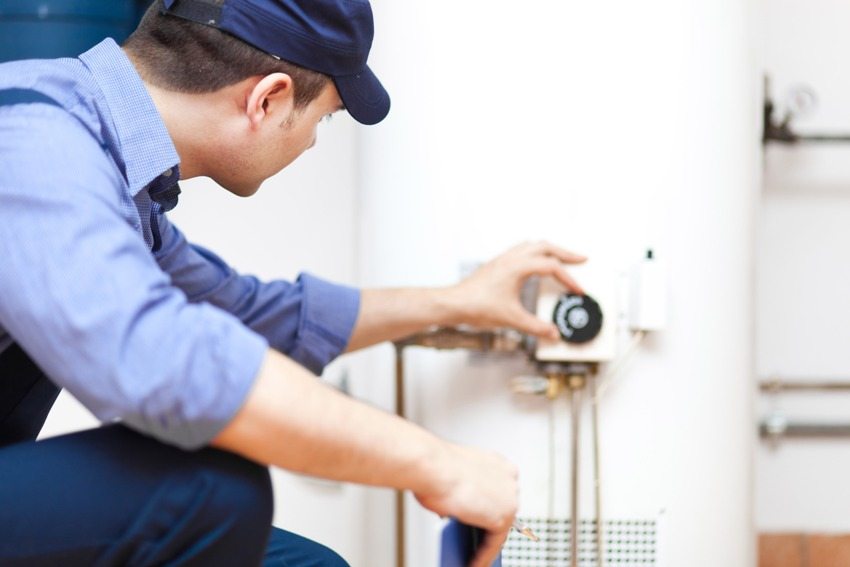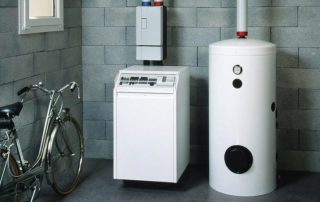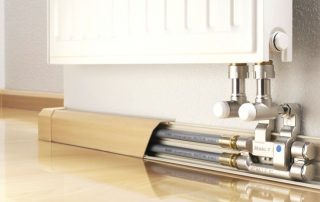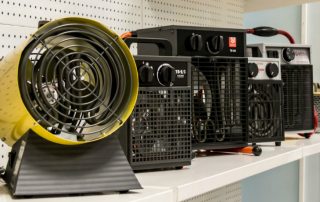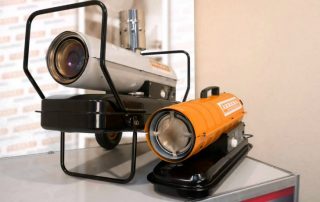The rise in energy prices leads to a stable increase in utility tariffs. Deterioration of boiler equipment and dilapidated mains reduce the reliability of centralized heat supply. There are autonomous heating options for a country house: the correct choice of the boiler will reduce dependence on external factors, increase the efficiency and functionality of the system. Foreign and domestic manufacturers produce heat generators for private houses. The generators run on electricity, solid, liquid and gaseous fuels. Each type of energy resource has specific advantages and disadvantages, but the choice of the boiler depends on the available fuel.

The correct choice of a boiler for a private home will increase the efficiency and functionality of the heating system
Content [Hide]
Heating options for a country house: how to choose a boiler
How to choose a heating boiler for a private house? Individual construction assumes the presence of a project, which includes the heat engineering calculation of the building. Schemes, detailing and recommendations of designers for arranging a heating system constitute the engineering part of the document. If there is no ready-made solution, then the article offers the reader the principle of self-selection of boiler equipment.
The generator power must correspond to the heat load of the heated premises. Deviations lead to uneven heating of heating devices, excessive fuel consumption, overheating of the coolant and equipment breakdown.

When calculating the boiler capacity, it is necessary to take into account the heat load of the heated premises.
The formula for determining the boiler power:
Wcat = (S x Woud)/10 (kW), where
Wcat - boiler power, kW;
S - heated area, m2;
Woud - specific power of the climatic zone per 10 m2 room area, kW.
Table 1. The value of the specific power by climatic zones:
| Climatic zone | Moscow suburbs | Northern regions | Southern regions |
| Specific power | 1,2÷1,5 | 1,5÷2,0 | 0,7÷0,9 |
Important! Simplified method for calculating power (1 kW per 10 m2 area) does not take into account the climatic conditions of the area, height, materials and the degree of insulation of the house.
Effective operation of autonomous heating is impossible without a set of measures:
- insulation of ceilings, floors, exterior walls, roofs, basements, attics, installation of double-glazed windows and modern door blocks;
- carrying out a preliminary heat engineering calculation (determination of heat loss through the enclosing structures);
- heating system equipment compatibility - design recommendations;
- high-quality installation of the system, compliance with the rules for commissioning and equipment operation;
- timely prevention - flushing and hydraulic testing of the heating system at the end of the heating period;
- preliminary water treatment - filtration and softening of boiler water.
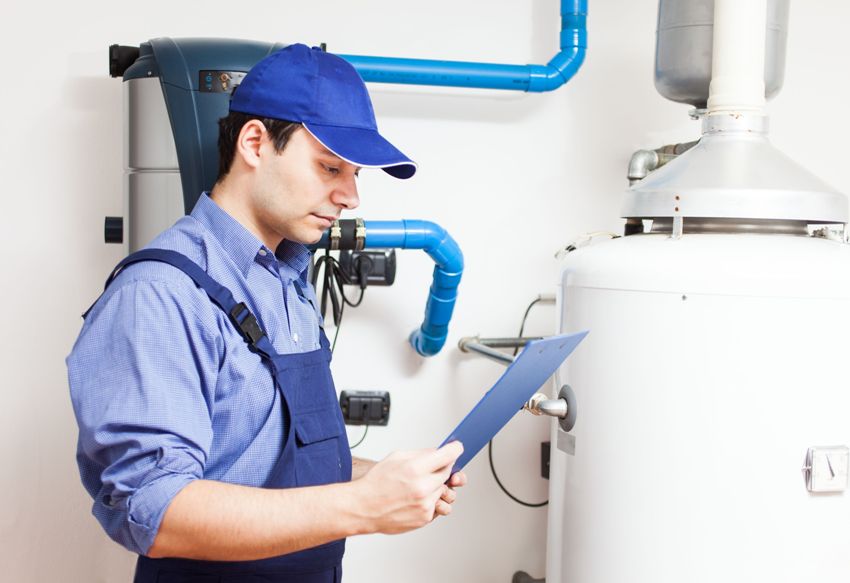
The efficiency of the heating system will directly depend on the quality of its calculation and installation.
Types of hot water heating systems
The water heating system is simple, reliable and economical: the boiler generates, and the water flow through the secondary circuit transfers heat energy to the living space. The volume of water in the heating system is conventionally taken as 15 liters per 1 kilowatt of boiler power. The enlarged standards take into account the filling of the boiler and secondary circuits, the capacity of radiators, risers, distribution pipes, heat exchangers, hydraulic dividers, distribution manifolds and heat storage tanks.
The natural transfer of thermal energy occurs according to the laws of gravity. Forced circulation of the coolant makes the process directed, predictable and controllable.
Heating houses up to 100 sq. m
Heating houses of a small area does not require the installation of pumping equipment - the movement of the coolant occurs naturally. The liquid, passing through the boiler heat exchanger, heats up. The density of the medium decreases and the volume increases and pushes the flow from the boiler into the main riser. The heated water rises up, enters the distribution line, then into the heating devices. Having transferred heat to the radiator body, the coolant cools down, and its density increases. At the outlet of the heaters, the chilled water enters the return line and moves towards the boiler.
The supply and collection pipelines are laid with a slope in the direction of flow (supply line to heating devices, return line to the boiler).

Water heated floor - a common way of heating a private country house
Heating of houses over 100 sq. m
Houses with an area of more than 100 m2, equipped with a system of forced circulation of the coolant. The power of the boiler and pump depends on the heat load of the room, total heat loss, the number of heating circuits and devices. Traditionally, pumps are installed on the bypass of the return line, through which the cooled coolant returns to the boiler. Additionally, pressure is injected in the long-distance hot water system and independent low-temperature heating circuits for underfloor heating.
Circulation pumps for heating are selected as a compatible element of the system, taking into account the nominal capacity and head. The pump performance data stated in the data sheet must correspond to the design values.
Calculation of pump performance:
G ≅ Q / (ΔT x 1.16) (m / s, l / s, m3/ hour), where
G - capacity of the circulation pump, m3/hour;
Q - maximum boiler power, according to the passport data, kW;
ΔT is the temperature difference in the supply and return pipelines of the heating system, ° C;
1.16 - coefficient of specific density of water, Wh / kg ℃.
Calculation of the head of the circulation pump:
H ≅ (R x L x Zƒ) / 1000 (m), where
H is the head of the circulation pump, m;
L is the total length of the supply and return pipelines, m;
R is the maximum resistance value on straight sections (Pa / m, 0.015 pascal per 1 running meter);
Zƒ is the product of safety factors and local resistances, Pa: resistance in ball valves, bends and fittings; internal resistance in chokes and thermostatic regulators; resistance in mixers and taps. If the heating system includes valves, fittings, thermostatic valves, mixers, then Zƒ = a x b x c.
Modern technologies make it possible to automatically adjust the rotor speed. The pump automatically reacts to peaks in operating load. The adapted models of autonomous heating heat generators are equipped with a circulation pump built into the boiler circuit.
Wood-fired stove heating
Residents of some regions of Russia successfully use an environmentally friendly and non-volatile version of water heating from a wood-burning stove. The reasons for organizing stove heating of a private house without gas and electricity are the absence or remoteness of the gas pipeline, the high cost of connecting communications.
Brick heating stoves are heavy, they are installed on a separate foundation. The firebox is laid out with refractory bricks. Inside, a welded steel coil with a thickness of 3 ÷ 5 mm is installed, which is connected to the water heating circuit. Sometimes the boiler circuit is built into an array of masonry, shielding it from the high temperature zone.
The dimensions, shape and position of the heat exchanger must ensure the required heating of the coolant. The coil, located in the body of the masonry, allows you to obtain heating at the outlet, sufficient for the operation of the low-temperature circuit of warm floors (30 ÷ 60 ° C). There are no general recommendations for the construction of brick ovens. Experienced stove-makers carry out the work according to their own calculations and drawings, keeping the secrets of their craft in the strictest confidence. The cost of the services of professional stove-makers (starting from 40 thousand rubles and above) depends on the region, materials and design of the hearth.
The advantage of stone wood-burning heating stoves: individual project selection and repair, available for self-execution. The mass and heat capacity of the material allows you to accumulate thermal energy. Heat radiation from the masonry surface does not stop after the end of the wood burning, which creates comfortable conditions in the house. Wood-fired stoves are additionally used for cooking, heating water and household needs.
The disadvantage of water heating from a brick oven on wood: a decrease in the speed of movement of the coolant when the stone cools. Installing a circulation pump increases heating efficiency, but makes the system dependent on electricity.
Heating using solid fuel boilers
Factory models of classic wood-burning boilers are classified as solid fuel. Non-volatile equipment is made of cast iron or steel. Durable cast iron units are made up of prefabricated sections that allow for repair and replacement of elements. Steel models can withstand sudden changes in pressure and temperature. Disadvantages of classic solid fuel boilers: the need for frequent loads of fuel and mechanical cleaning of the furnace, chimney, ash pan.
Pyrolysis (gas generating) units are distinguished by the operating time on one tab up to 10 hours, the efficiency is 90%, the complete combustion of the fuel. However, the conditions for stable combustion depend on the quality of the wood (coal) and the completeness of the combustion chamber loading. Adjustment and automation in the pyrolysis process is impossible, therefore the power of the unit changes in stages, from the beginning, peak and end of combustion.
Device long burning solid fuel boilers fundamentally different from pyrolysis. Constructions with a vertical hearth and metered air flow increase the burning time.

Sectional view of a traditional solid fuel boiler (left) and a long burning solid fuel boiler (right)
The possibility of using any type of solid fuel and the transition to an alternative heating method increases the attractiveness of the combined models. Modification of the units allows, if necessary, to install gas burners and electric heaters in the furnace.The manufacturer's recommendations, indicated in the boiler passport, facilitate the installation of the unit, the installation of the chimney and the choice of additional equipment.
Models of combined heating boilers (wood / electricity) are in particular demand among buyers. The price of units of the same capacity is presented for comparison in the overview table:
| Description of the unit (passport specifications) | power, kWt | Dimensions (LxWxH), mm | Price, rub |
| Solid fuel pyrolysis boiler Bourgeois-K (Standard - 10), floor-standing: | |||
|
10 | 430x740x800 | 36800 |
| Solid fuel boiler in floor-standing version Buderus Logano S111-2-12: | |||
|
13,5 | 730x600x875 | 40000÷75000 |
| Solid fuel boiler of long burning Zota Poplar M-14 (with the possibility of completing with a gas burner and electric heaters): | |||
|
14 | 845x440x875 | 28245 |
Domestic developments have received consumer recognition in the quality-price category of solid fuel boilers for heating a private house. The reviews that equipment owners leave on independent forums testify to the competitiveness of Russian brands.
Gas heating of a private house
Statistics claim that 2/3 of autonomous heating systems are a variant of gas heating of a country house. Cheap fuel justifies the high cost of the units: gas enters the furnace automatically, constant control over the combustion process is not needed. Gas heat generators are equipped with a burner, a built-in circulation pump, an expansion tank, a heat exchanger, a security system and an automation group.
Consider the classification of gas-fired boilers and give an example of calculating the gas consumption for heating a private house.
Gas boiler power
Gas boiler choose according to the power of the unit. The standard condition is that 1 kW of boiler power per 10 square meters of area is observed if the structural elements of the building are insulated and the ceiling height does not exceed 3 meters. The dilapidated building envelope or the installation of a heat exchanger for hot water is the reason for choosing a heat generator with a capacity margin.
Important! The power of the unit declared in the technical passport corresponds to the standard pressure in the supply gas line (0.003 MPa low pressure). In practice, the gas pressure is below the contractual values, therefore, the boiler capacity may differ significantly from that indicated in the passport.
Number of contours
Steel single-circuit heating units with a copper heat exchanger are used to heat small houses. Heating gas generators equipped with automation are used for radiator heating and a low-temperature circuit for underfloor heating. For hot water supply, the system is complemented boiler and a circulation pump.
Double-circuit gas boilers are used simultaneously for heating and preparing hot water. There are floor-standing models of double-circuit gas boilers made of cast iron, with built-in storage boiler... The wall-mounted version of lightweight structures, with a heating ring and an instantaneous water heater, is made of steel.
Combustion chamber type: open and closed
Open fireboxes take air for combustion of gas from the room in which the boiler is installed. The equipment should be located in a special combustion room equipped with supply ventilation and a vertical chimney.
Gas boilers with a closed combustion chamber work thanks to the forced intake of air from the street. The associated exhaust of combustion products heats up a portion of fresh air and increases the efficiency of the heat generator.
Combustion products removal system
The classic way of removing exhaust gases is natural draft or forced exhaust through the chimney. The modern version is a pipe-in-pipe coaxial hood. Such an exhaust gas removal system does not require the installation of a classic chimney. Combustion products escape to the outside through the inner pipe. Fresh air enriched with oxygen is drawn into the gap between the inner and outer shell of the pipe. External weather conditions do not affect the air supply to the combustion chamber and the exhaust gas discharge.
Important! Gas fired boilers are classified as explosive and fire hazardous units. The regulation for installing the generator is spelled out in the regulatory documents relating to individual boiler installations. Compliance with the rules requires considerations of personal safety: with a lack of oxygen, natural gas does not completely burn out. The resulting carbon monoxide (CO ↑) is colorless and odorless. The presence of 1% carbon monoxide in the indoor air is dangerous to human health and life. Fuel leakage and the formation of an explosive gas-air mixture can lead to dire consequences.
Gas consumption for heating a house 100 m2
A preliminary calculation of the gas consumption is carried out to determine the economic profitability of the generator and the feasibility of using other types of fuel. The estimated gas consumption can be found in the technical passport of the boiler. Manufacturers indicate the hourly demand for the resource. The value is multiplied by 720 (the number of hours in a day and days in a month), then divided by 2 (recommended power correction) and multiplied by 7 (average heating period).
In theory, the economical operation of a heat generator allows you to generate 1 kW of thermal energy when burning 0.1 m3 gas. This means that by burning one cubic meter of gaseous fuel, you can heat a residential building with an area of 100 square meters for one hour. Daily gas consumption 24 m3.
Related article:
Floor standing gas boilers for home heating. Selection of the optimal model. Advantages and types of gas equipment. Single and double-circuit units. Boiler power selection. Heating systems diagrams.
The maximum price per cubic meter of gas for the population is 7 rubles 29 kopecks (Russia, Omsk, March 2016). Fuel cost for heating a residential building with an area of 100 m2 will be 175 rubles per day or 5250 per month. Considering that the standard duration of the heating season depends on the climatic zone, and the boiler does not work constantly with maximum load, then the annual gas bill will not exceed 20,000 rubles.
In practice, the gas consumption for autonomous heating is determined by the metering device. The amount of gas bills during the heating season is comparable to the amount of centralized heating in a private house for a month! According to the owners of autonomous heating systems with a gas boiler, the costs of the project, equipment and installation of the heating system pay off within 3 ÷ 5 years.
Useful advice! The feedback system (temperature sensors and programmer) of the gas boiler will provide fuel savings up to 20%.
Table 3. Models of gas boilers for heating a private house (prices):
| Boiler brand, country of origin, power | Price, rub |
| Gas floor boiler Lamborghini ERA F 32 M, made in Italy. Rated power 32 kW, efficiency 90.9 ÷ 92%, one circuit. | 62000 |
| Wall gas boiler Ferroli Domina C 13 N (open combustion chamber), made in Italy. Rated power 13 kW, efficiency 93%, two circuits. | 31165 |
| Wall-mounted gas boiler Protherm Cheetah 23MOV, made in the Czech Republic. Rated power 23.3 kW, efficiency 90%, two circuits. | 30340 |
| Floor gas boiler AOGV-17.4-1 (M) Eurosit, made in Russia. Power 17.4 kW, single-circuit. | 13969 |
| Wall-mounted gas boiler Aton Compact AOGVMND - 12.5 EV, made in Ukraine, (closed combustion chamber). Power 12.5 kW, efficiency 90%, two circuits. | 23350 |
| Gas parapet boiler Alaska AOGV 10C, made in Russia. Power 10 kW, efficiency 90%, one circuit. | 20615 |
| Floor-standing single-circuit gas boiler BaltGaz Therm KSG - 10, made in Russia. Power 10 kW, efficiency 87%, one circuit. | 13700 |
Electric heating
A simple, quick and, at first glance, inexpensive way to warm up a country house is to install an electric boiler. However, operating costs significantly exceed all existing heating systems.
The main condition for stable operation of electric heating is uninterrupted supply and sufficient power of electrical wiring. It is reasonable to use combined options for electric heating of a country house.
The appearance of an electric boiler resembles a classic heat exchanger of the water-water series: a cylindrical chamber, inside which there are thermal electric heating elements. The generator operates from a household or three-phase network (voltage 220 or 380 V). By the principle of heating, there are electrode (heating elements) and induction models. The efficiency of electrical units is 90%. There are models of electric boilers of one and two-circuit design.
Table 4. Electric boilers for heating a country house (options and prices):
| Boiler brand, operating voltage, power | Price, rub |
| Electric boiler Thermo Trust ST 9, power 9 kW, 220/380 V. | 14050 |
| Electric boiler Evan EPO 12 Standard -Economy. | 7420 |
| Wall-mounted electric boilers Severyanin 3-10 kW, efficiency 93%. | 12198 — 17423 |
| Electric boiler Intois Optima 12 (with pump), power 12 kW, operating voltage 380 V. | 32900 |
The question of which heating is better for private houses, each owner decides for himself. However, it must be remembered that the economic feasibility of newfangled trends is questionable, and the repair of high-tech boilers in remote areas is problematic. The best option is a combination of units with different fuels.









